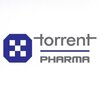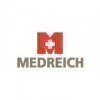Formulation & Development Executive
Formulation & Development Executive Interview Questions and Answers
Asked in TENSHI LIFE SCIENCES

Q. What is QbD and what steps are involved?
QbD stands for Quality by Design, a systematic approach to pharmaceutical development.
Identify critical quality attributes (CQAs) of the product
Define target product profile (TPP) and target product quality profile (TPQP)
Design experiments to understand and control the formulation and manufacturing process
Establish a design space within which the product will meet the desired quality attributes
Use risk assessment and mitigation strategies throughout the development process
Asked in TENSHI LIFE SCIENCES

Q. Excipients used in the formulation of Oral solids
Excipients are inactive ingredients used in oral solid formulations to improve stability, taste, appearance, and aid in drug delivery.
Excipients can include fillers, binders, disintegrants, lubricants, and coatings.
Examples of excipients commonly used in oral solid formulations are microcrystalline cellulose, lactose, magnesium stearate, and hydroxypropyl cellulose.

Asked in Torrent Pharmaceuticals

Q. What is the granulation endpoint?
Granulation end point is the stage in the granulation process where the desired granule size and shape is achieved.
Granulation end point is determined by monitoring the granule size, shape, and moisture content.
It is important to reach the granulation end point to ensure uniformity and consistency in the final product.
Factors such as binder concentration, mixing time, and drying conditions can affect the granulation end point.
Examples of techniques used to determine the granu...read more
Asked in TENSHI LIFE SCIENCES

Q. What are the different classifications of oral solid dosage forms?
Oral solids are pharmaceutical dosage forms that are intended to be taken by mouth and are in solid form.
Tablets
Capsules
Powders
Granules
Lozenges

Asked in Granules India Limited

Q. What are the critical aspects of the product you handled?
Understanding product criticality ensures safety, efficacy, and compliance in formulation and development processes.
Criticality determines the impact of a product on patient safety; for example, a cancer drug's formulation must be precise.
Products with high criticality require stringent quality control measures to prevent contamination, such as sterile injectables.
Regulatory compliance is crucial for critical products; for instance, vaccines must meet specific guidelines to e...read more
Formulation & Development Executive Jobs

Interview Experiences of Popular Companies








Reviews
Interviews
Salaries
Users

















